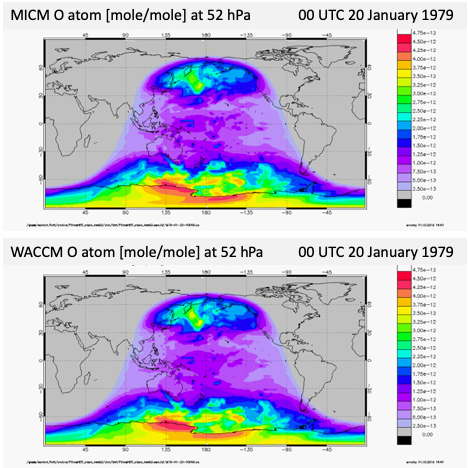MUSICA's Model Independent Chemistry Module
ACOM software engineers and scientists have further developed the Model Independent Chemistry Module (MICM), which is a set of preprocessor codes that configure and generate a chemical mechanism for any atmosphere model, from a chemical box model to 3-d chemistry transport and climate models. MICM is compliant with the common physics framework which allows communication between an atmosphere host model and the physics and chemistry parameterizations.
A box model version of MICM (called MusicBox) was prototyped. It is capable of representing simple gas-phase chemistry (the Chapman chemistry mechanism). This module has been further developed to include a variety of ways in calculating reaction rate constants (including heterogeneous reactions) and a fast, accurate solver for integrating the differential equations that represent the chemistry. The ACOM Tropospheric Ultraviolet and Visible (TUV) radiation and photolysis rate code was implemented in MICM, allowing for inline computation of photolysis rates, in addition to retaining the capability of prescribing photolysis rates. As part of this work, the calculation of the actinic radiation flux and the computation of the photolysis rates were separated, which simplifies the process of updating the photolysis rates, and is the first step in unifying radiative transfer and photolysis. MusicBox is now being tested for more complex tropospheric chemistry mechanisms.
Additionally, we have shown that the Fortran code generated by MICM satisfactorily works in the WACCM model. By “piggybacking” MICM Chapman chemistry into WACCM, we show in Figure 1 below that the MICM O atom mixing ratios are nearly the same as O computed in the full WACCM mechanism. Differences between the results are from differences in the photolysis rate calculation (TUV in MICM code versus a lookup table in WACCM code) and reduced chemical complexity.

Contact
Please direct questions/comments about this page to:
Carl Drews
NSF NCAR | Research IT | ACOM